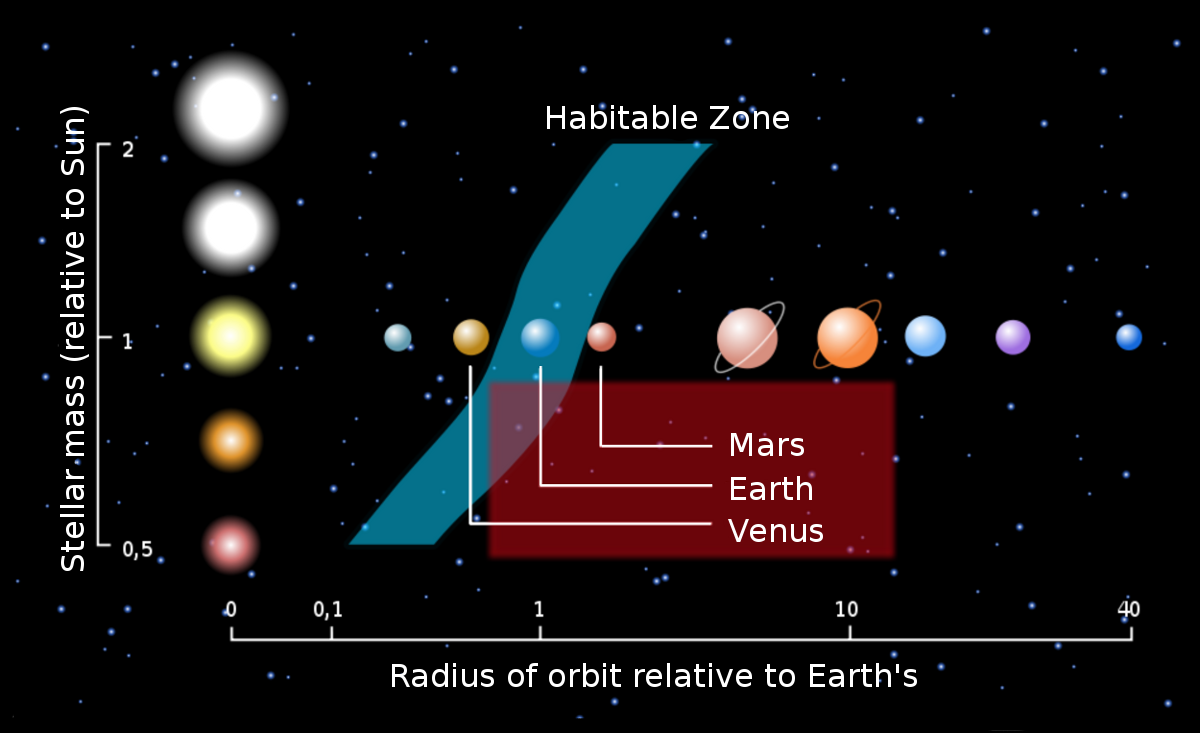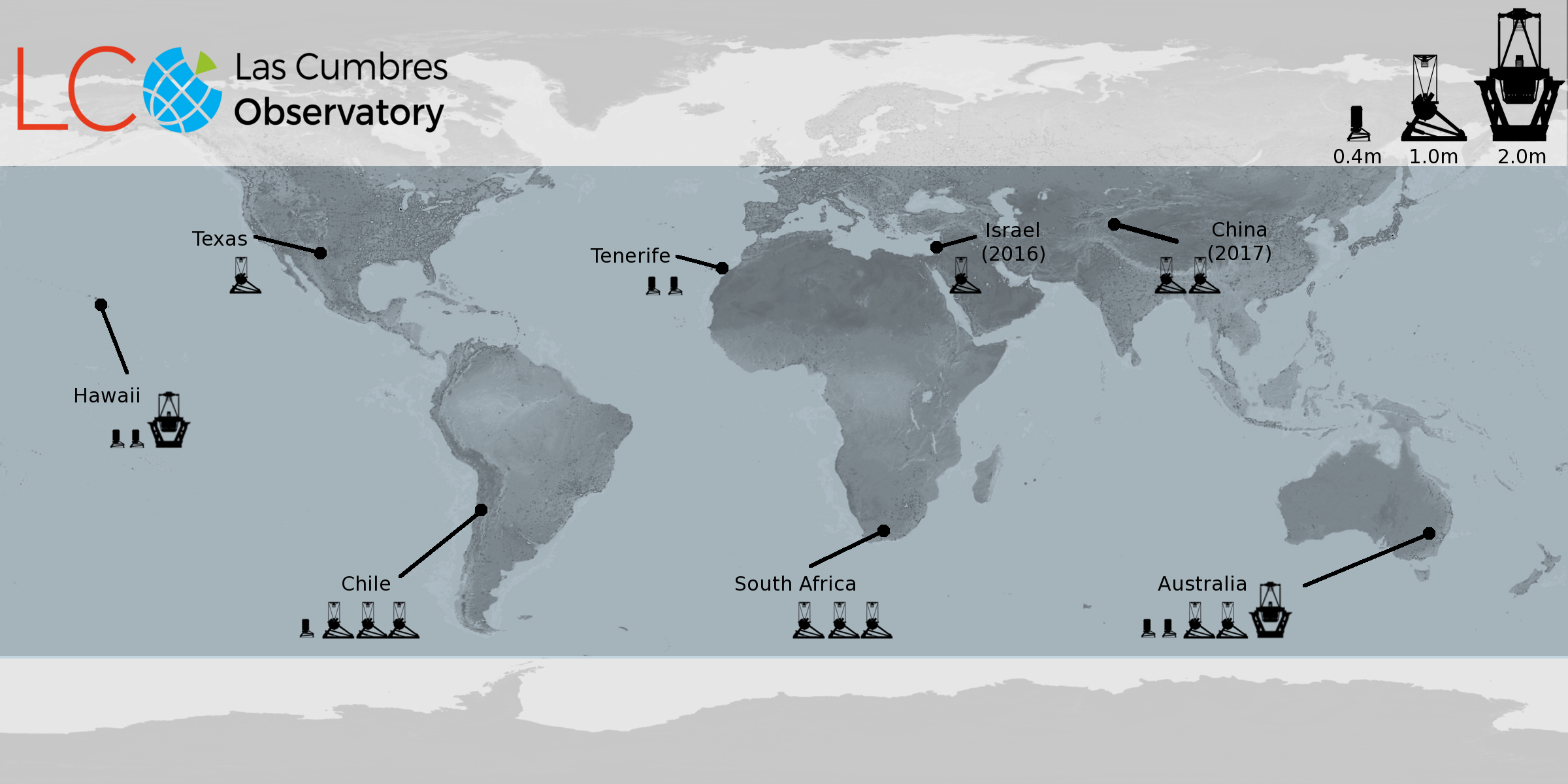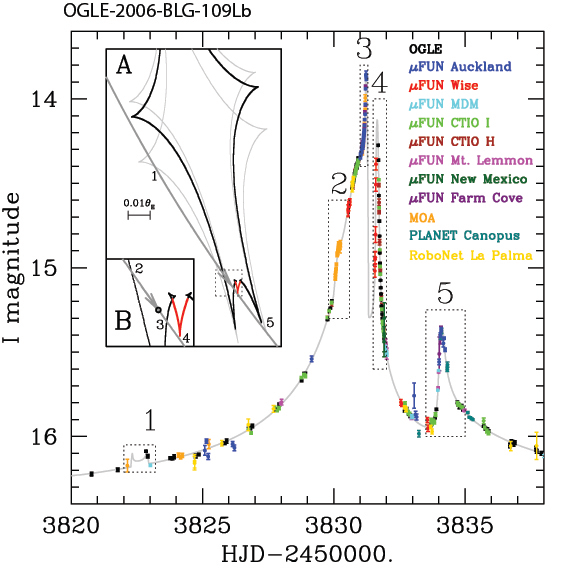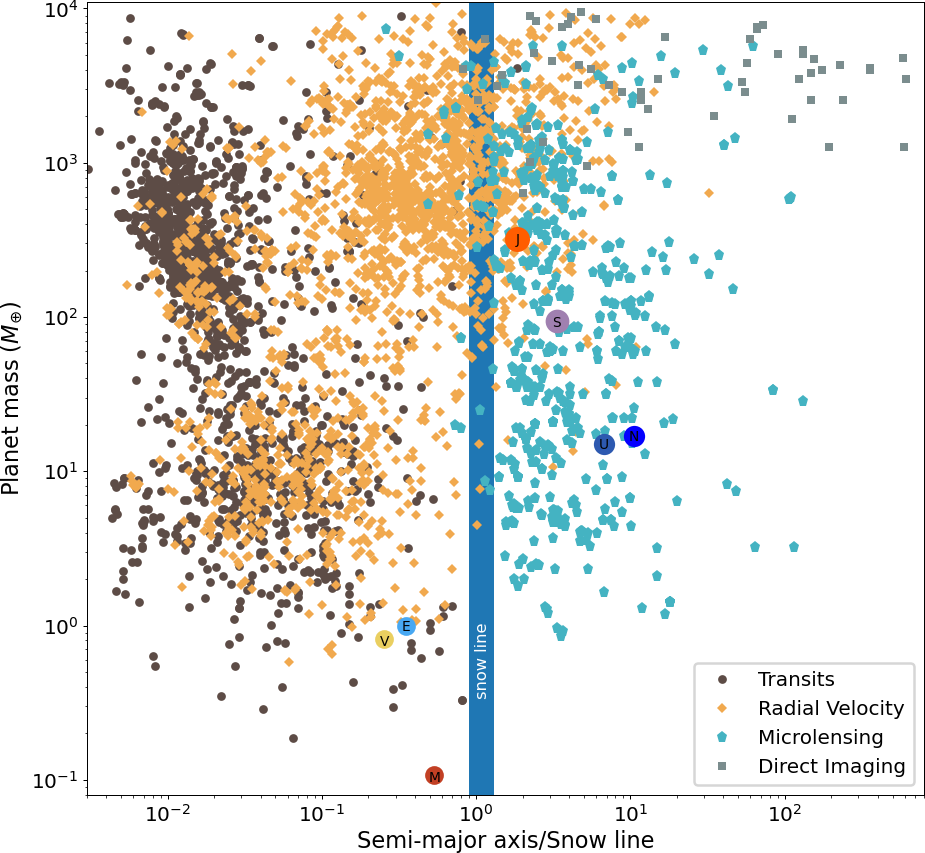research
I am a member of the Transients and Variable Stars science collaboration of the Vera C. Rubin Observatory Legacy Survey of Space and Time. My particular research interests focus primarily on microlensing projects that use the LCO robotic network and associated facilities to discover and verify exoplanets and black hole candidates.
I also participate in a number of additional research projects, including the study of variable stars in Globular clusters and the search for nearby exo-planets as a member of the Pale Red Dot team. Our 2016 announcement of the discovery of a terrestrial planet orbiting our nearest star, Proxima Centauri, was hailed as one of the scientific highlights of 2016.
The microlensing method
Einstein predicted that the gravitational field of any massive star will act as a gravitational lens and bend the path followed by the light rays originating from any bright star that happens to pass behind the lens. The effect of lensing at cosmological distances is practically observed as multiple distorted images of the background star around the edge of the gravitational influence of the lensing star. However, lensing also occurs on smaller scales in our galaxy and then the resulting images cannot be individually resolved. We call this phenomenon microlensing. What we see in this case instead, is a brightening of the background star that can last from a few days to several weeks. Then the star fades back to its normal brightness. If the lensing star hosts a planetary companion, there is a chance that the planet can also act as a mini-lens and thereby reveal its presence.
Point-source, point-lens: Lensing occurs when the path of light from a distant luminous source (shown as a filled blue circle) travels near a massive object (shown as a black circle), called a "lens", and gets bent due to the gravity of the lens. The images of the source generated by the lensing effect are show as green. The lightcurve showing the change in magnification, being the sum of the areas of the two images divided by the area of the unlensed source, is displayed on the right.
Microlensing is unique in its capability to rapidly survey the population of cold planets, with a sensitivity to planetary mass that goes down to just below the mass of the Earth. The population of stars that it surveys are low-mass stars, typically M-dwarfs, between here and the centre of the Galaxy. Other methods are capable of detecting planets up to a few hundred light years away but microlensing is the only method that can probe the galactic population of planets. The planets discovered by this method are typically located between 0.6 and 6 AU from the host star, which corresponds to a cold zone that is more conductive to planet formation and which nicely overlaps the colder outer edge of the Habitable Zone. This region of parameter space is still largely inaccessible to other methods.

Habitable Zone: The size of the Habitable Zone (blue strip) for different types of main-sequence stars. The habitable Zone is defined as the range of distances from a star where water can exist on the surface of a planet in liquid form over millions of years. The planets of the Solar system are also indicated for comparison. The red-shaded rectangle indicates the region where ground based microlensing searches are sensitive.
The ROME/REA Key Project
Intensive monitoring of the lightcurves of Galactic Bulge microlens events is the fastest way to discover "cool planets" in 1-10 AU orbits around late-type stars, with sensitivity to small planets approaching the mass of the Earth. Hundreds of such events are routinely identified each year by the OGLE and MOA surveys, and the lightcurves of several dozen are also observed by other teams. From 2016 to 2020, the ROME/REA project used the southern ring of the 1m LCO robotic telescope network to discover these new cool exoplanets.

The LCO global network: The ROME/REA Key Project obtained frequent observations from the three sourthern sites in Chile, South Africa and Australia.
Our team pioneered the technique of adaptive scheduling of microlensing targets through the use of a prioritisation algorithm that continuously shuffles the observable microlensing targets, giving higher priority to the ones that are more likely to reveal a planetary signal. It calculates the optimal frequency at which each ongoing microlensing event needs to be sampled at in order to maximize the planet detection probability. During the course of the project, members of the team developed the pyLIMA open-source microlensing modeling software, the pyDANDIA open-source difference image analysis pipeline and a novel Target and Observation Management system which served as an ispiration for the development of LCO's own TOM Toolkit.
ROME/REA light curves and data products are available on the NASA Exoplanet Archive.
Planet detections
Hundreds of planets have already been discovered by microlensing. Of these planets, most are Jupiter-analogs, but a few have masses comparable to that of Neptune and below. Theoretical predictions estimate that small, cold planets are abundant and these can be detected by microlensing surveys. Microlensing is also sentitive to multiple planet systems and free-floating planets.

The two giant planets of OGLE-2006-109Lb: Coordinated observations by the OGLE, MOA, RoboNet, microFUN and PLANET teams discovered evidence of a planetary system that looks like a scaled-down version of our own. The host star is dimmer than the Sun and both gas giant planets are also smaller than our own Jupiter and Saturn and orbit closer to their parent star. The lightcurve of the brightness variations shows five distinct features which are due to the presence of these planets. The combined data from eleven observatories are displayed.
Sensitivities of search methods
Each of the five different techniques used to find exoplanets is most sensitive to configurations that are different from our own Solar system. Most detections to date have been through the radial velocity and transit methods. Microlensing and direct imaging are finding colder planets further away from their host stars. For the time being no detections by astrometry have been confirmed.

Planets found by different methods: Planet-finding methods are complementary. This “orbit size-vs-planet mass” diagram shows all reported exoplanets to-date [06/12/2023]. The semi-major axis has been scaled to the approximate location of the snow line of the planet-hosting star. Transits and radial velocity are exceptionally good at finding “hot” planets close to their host stars, whereas microlensing and direct imaging are more efficient in discovering “cold” planets. [Figure based on data from the NASA Exoplanet Archive.]
related publications
- Street, R. et al., 2024, PASP, 136, 4501:ROME/REA: Three-year, Tri-color Timeseries Photometry of the Galactic Bulge
- Tsapras, Y. et al., 2019, PASP, 131, 1006: ROME/REA: A Gravitational Microlensing Search for Exoplanets Beyond the Snow Line on a Global Network of Robotic Telescopes
- Hundertmark, M. et al., 2018, A&A, 609, A55: RoboTAP: Target priorities for robotic microlensing observations
- Tsapras, Y., 2018, Geosciences, 8, 365: Microlensing Searches for Exoplanets
- Bennett, D. et al., 2016, AJ, 152, 140: The First Circumbinary Planet Found by Microlensing: OGLE-2007-BLG-349L(AB)c
- Tsapras, Y. et al., 2016, MNRAS, 457, 1320: The OGLE-III planet detection efficiency from six years of microlensing observations (2003-2008)
- Tsapras, Y. et al., 2009, AN, 330, 4T: RoboNet-II: Follow-up observations of microlensing events with a robotic network of telescopes
- Horne, K. Snodgrass, C. Tsapras, Y., 2009, MNRAS, 396, 2087H: A metric and optimization scheme for microlens planet searches
- Gaudi, S. et al, 2008, Science, 319, 927G: Discovery of a Jupiter/Saturn Analog with Gravitational Microlensing

